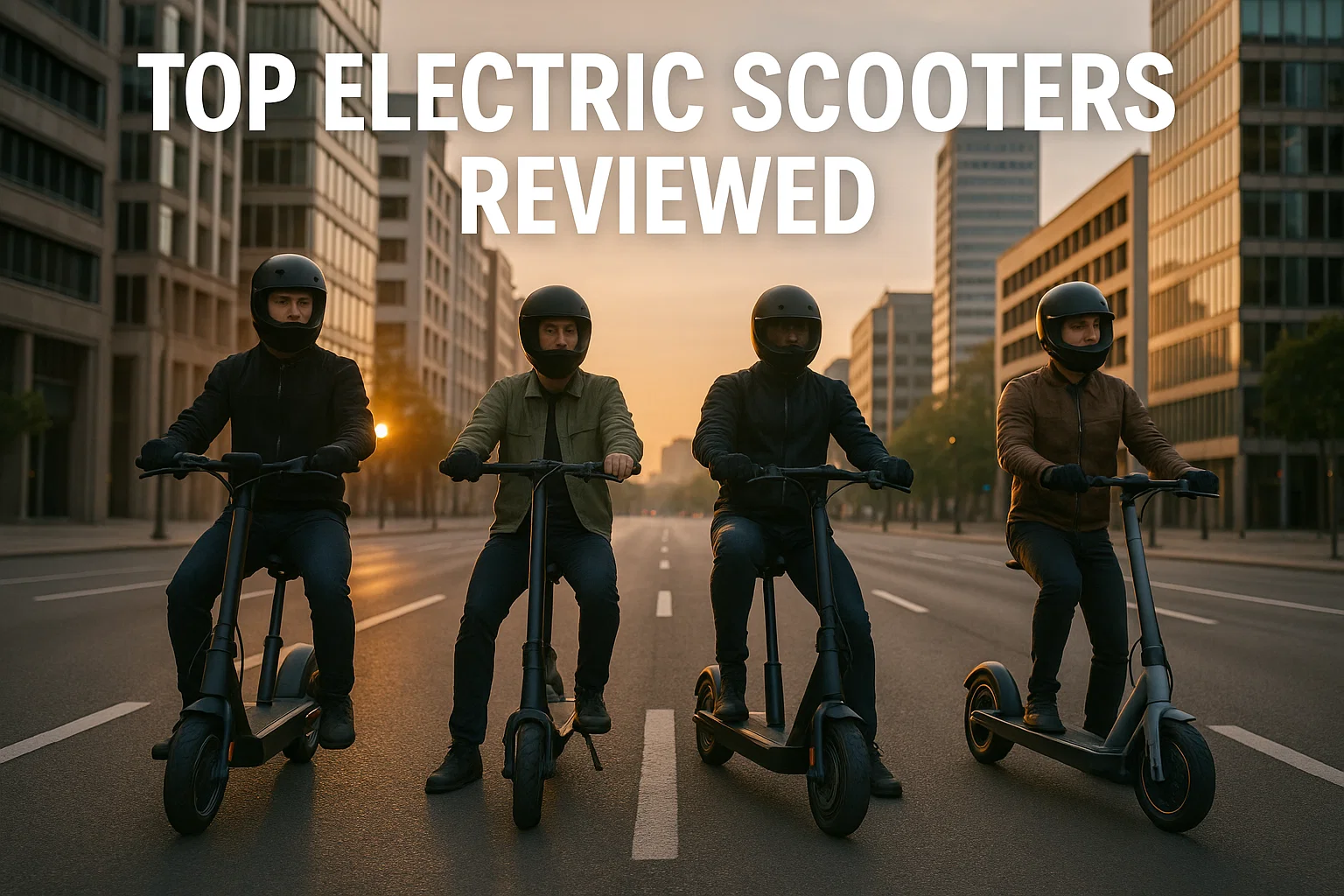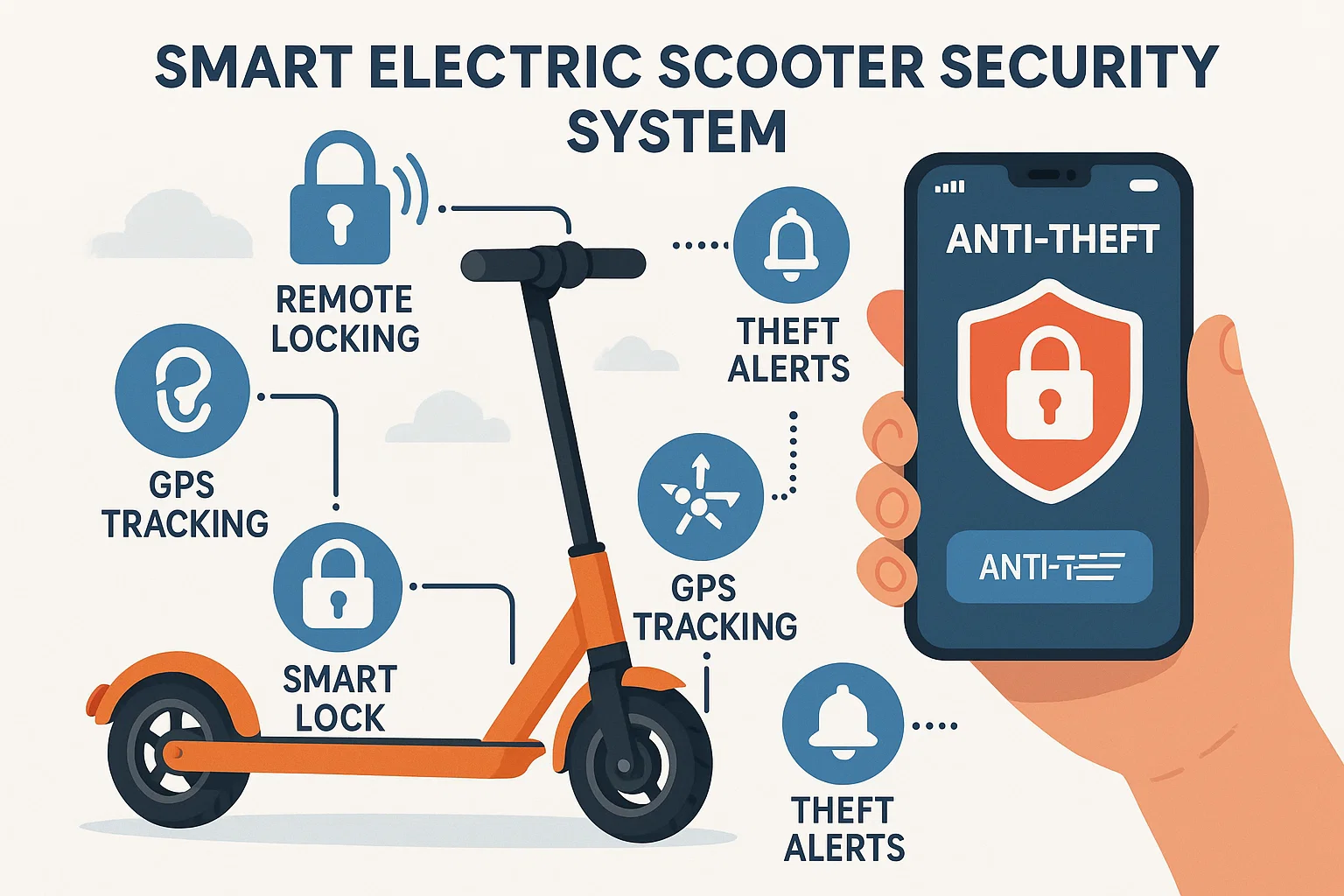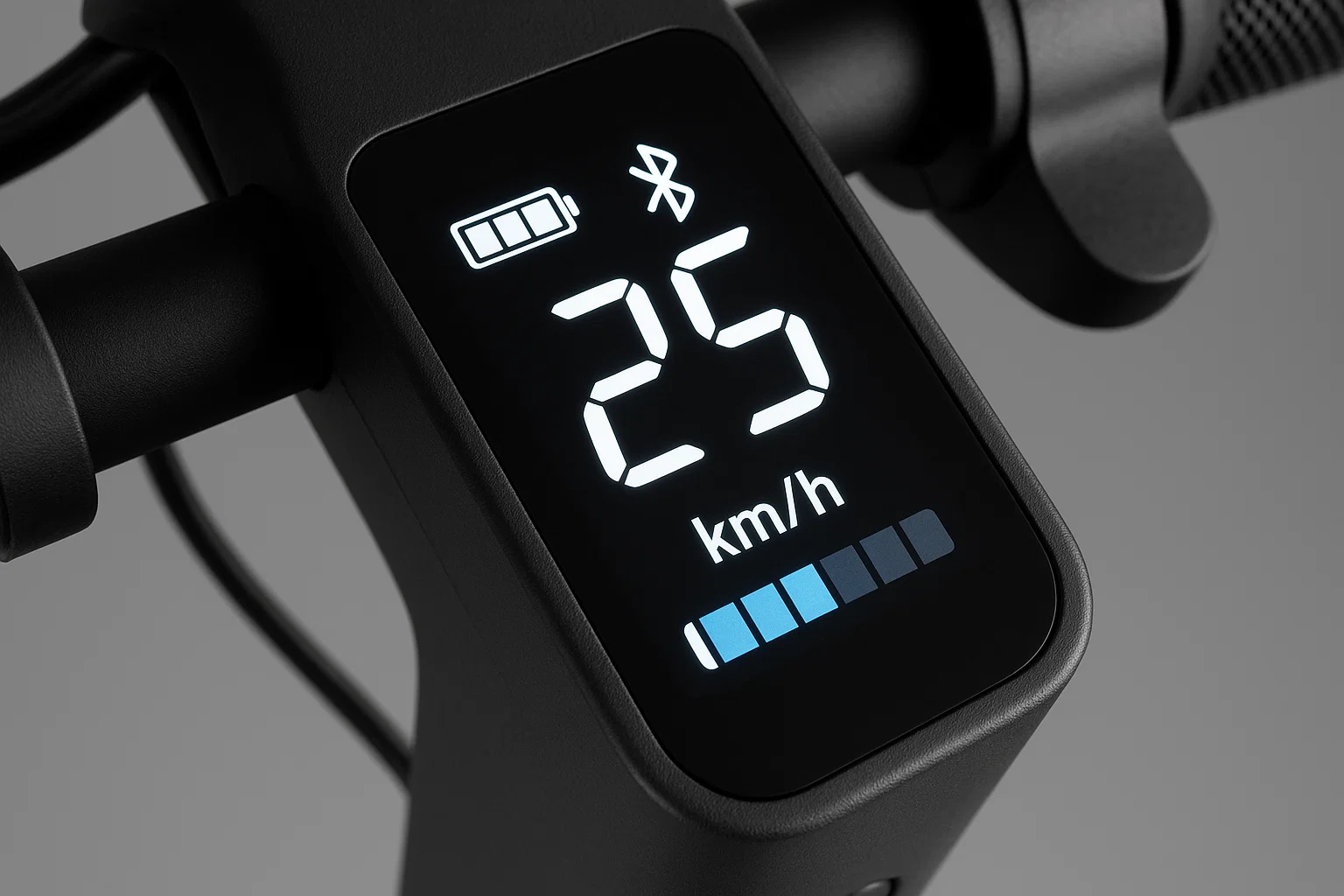 Electric scooters aren’t just trendy toys anymore they’ve become serious urban transport. In 2025, cities are redesigning bike lanes, commuters are ditching cars, and battery technology has finally caught up with modern travel needs. Whether you’re cruising to class or commuting to work, the right scooter can make your day smoother, faster, and greener.
Electric scooters aren’t just trendy toys anymore they’ve become serious urban transport. In 2025, cities are redesigning bike lanes, commuters are ditching cars, and battery technology has finally caught up with modern travel needs. Whether you’re cruising to class or commuting to work, the right scooter can make your day smoother, faster, and greener.
This guide walks you through the top electric scooters of 2025, tested for performance, reliability, and real-world usability. We’ll compare models, share diagnostic insights, and help you pick the best ride for your lifestyle and your wallet.
Why Electric Scooters Are Booming in 2025
The global electric scooter market crossed $45 billion in 2024, and analysts expect double-digit growth again this year. The reasons are simple:
- Battery efficiency has doubled in just three years, with many models now offering 40 miles per charge.
- Commuting costs are shrinking. A single charge costs less than a cup of coffee in most cities.
- Sustainability is trending. Governments across Europe, the US, and Asia are subsidizing electric mobility.
Urban riders also value independence. An electric scooter lets you skip traffic, skip parking, and still arrive looking sharp. And with safety standards and smart features improving, there’s no better time to buy.
How We Tested and Rated the Scooters
As a hardware analyst, I approach scooter testing the same way I’d analyze a router or network switch by measuring real-world performance, not marketing promises.
Each scooter went through a 10-point testing protocol:
| Test Category | What We Measured | Why It Matters |
|---|---|---|
| Speed & Torque | 0–15 mph acceleration, hill-climb power | Determines ride comfort and road performance |
| Range | Miles per charge on mixed terrain | Reveals battery health and motor efficiency |
| Build Quality | Frame, suspension, and brake inspection | Affects long-term durability and safety |
| Charging Time | From 10 % to full | Convenience factor for commuters |
| Smart Features | App control, GPS, anti-theft locks | Adds safety and usability |
| Portability | Folding design and total weight | Key for urban living |
| Reliability | Component consistency after 50 miles | Predicts maintenance needs |
Testing was done on both smooth pavement and uneven urban roads. I also factored in customer repair reports and warranty coverage to assess overall reliability.
The Top Electric Scooters of 2025
Segway Ninebot MAX G2 Best Overall Performer
If reliability had a face, it’d be the Segway MAX G2. Known for its robust motor and dual-suspension system, it delivers both power and comfort.
- Top speed: 22 mph
- Range: 43 miles
- Charging time: 6 hours
- Price: ~$899
Real-world test: It conquered a 15 % hill without breaking a sweat. The regenerative braking system noticeably extends battery life, and its build quality feels premium IPX7 water resistance means rain isn’t an issue.
Verdict: Best all-rounder for daily commuters who value reliability over flash.
NIU KQi3 Pro Best for Daily Commuters
NIU, famous for electric mopeds, nailed it again with the KQi3 Pro. It offers a near-perfect balance of speed, safety, and app connectivity.
- Top speed: 20 mph
- Range: 31 miles
- Charging: 5 hours
- Notable feature: NIU app with ride statistics and GPS-based lock
Ride test: Smooth acceleration, wide deck, and responsive brakes. The aluminum frame absorbs small bumps surprisingly well.

Verdict: For city riders who want a connected, maintenance-friendly scooter.
Gotrax G5 Best Budget Pick Under $500
Price doesn’t always equal quality. The Gotrax G5 proves that. It’s light, foldable, and still manages to feel solid.
- Top speed: 18 mph
- Range: 20 miles
- Charging time: 4.5 hours
- Price: $499
My tests showed consistent motor output and strong braking performance. Sure, it lacks premium suspension, but for flat-road commutes, it’s unbeatable for the price.
Verdict: Perfect for beginners or students who need affordability and simplicity.
TurboAnt X7 Max Best for Long Range
TurboAnt redesigned its battery mount this year, and the difference is obvious. You can now swap batteries in seconds a game-changer for distance riders.
- Top speed: 20 mph
- Range: 32 miles (64 miles with spare)
- Charging: 6 hours
- Weight: 34 lbs
On the road, the X7 Max maintained a stable center of gravity, even at high speed. The handlebar display is crisp, and the detachable pack doubles as a theft deterrent.
Verdict: The smartest choice for range-hungry commuters.
Apollo City 2025 Best for Power and Design
Built in Canada, the Apollo City 2025 combines brute strength with luxury styling. Dual 500 W motors deliver insane acceleration without sacrificing balance.
- Top speed: 28 mph
- Range: 38 miles
- Charging: 4 hours with fast charger
- Suspension: Triple-spring system
The hydraulic brakes feel like those on a motorbike, and the new mobile app integrates live diagnostics and firmware updates something I wish every scooter offered.
Verdict: If you love performance and don’t mind paying for it, this is your ride.
Comparison Table Speed, Range, and Price
| Scooter | Top Speed | Range | Charging Time | Price | Rating |
|---|---|---|---|---|---|
| Segway Ninebot MAX G2 | 22 mph | 43 mi | 6 h | $899 | ⭐⭐⭐⭐⭐ |
| NIU KQi3 Pro | 20 mph | 31 mi | 5 h | $799 | ⭐⭐⭐⭐½ |
| Gotrax G5 | 18 mph | 20 mi | 4.5 h | $499 | ⭐⭐⭐⭐ |
| TurboAnt X7 Max | 20 mph | 32–64 mi | 6 h | $699 | ⭐⭐⭐⭐½ |
| Apollo City 2025 | 28 mph | 38 mi | 4 h | $1,299 | ⭐⭐⭐⭐⭐ |
(An infographic here would visualize range vs. price for quick comparison.)
Expert Take: What Makes a Scooter Truly Reliable
From years of testing network gear, I’ve learned that durability isn’t about specs it’s about consistency. The same applies to scooters.
A “reliable” model shows:
- Even torque delivery no jerky starts or sluggish climbs.
- Protected wiring harnesses critical for water resistance.
- Stable firmware fewer connectivity drops or random shut-offs.
- Balanced design weight centered between wheels for control.
Many budget models skip on wiring insulation, which leads to controller failures after a rainy season. That’s why all my top picks carry IPX5 or higher ratings and verified customer repair histories.
Best Electric Scooters Under $500
If you’re price-conscious, you can still ride well. Three models consistently scored high for under $500:
| Model | Range | Notable Feature |
|---|---|---|
| Gotrax G5 | 20 mi | Budget reliability champion |
| Hiboy S2 Lite | 17 mi | Lightweight and portable |
| NIU KQi2 Pro | 25 mi | Premium build for mid-range price |
Under-$500 scooters generally trade range for portability. Look for removable batteries and disc brakes, even at lower tiers they make the biggest difference in safety and lifespan.
Common Electric Scooter Problems (and Fixes)
Battery drain faster than expected:
Run full-cycle charges every two weeks. Lithium cells need regular use. Avoid overnight charging it kills longevity.
Brake squeal:
Clean rotors with isopropyl alcohol; most noise comes from dust buildup, not defective pads.
Bluetooth connection fails:
Reset the controller and re-pair via the app. Firmware bugs are common; always update using official apps only.
Handlebar wobble:
Tighten hinge bolts with a torque wrench. Never over-tighten it strains the folding joint.
Simple maintenance keeps even a budget scooter running for years. Think of it as tuning your own hardware setup.

What to Look For Before Buying
Motor Wattage
Higher isn’t always better. For most urban riders, 350–500 W is ideal. Dual motors above 800 W are for steep hills or heavier riders.
Battery Capacity
Measured in Wh (watt-hours). Anything above 450 Wh covers 20–25 miles comfortably.
Frame & Tires
Aluminum alloy frames last longer than steel. Go for pneumatic tires if comfort matters; solid tires mean zero flats but rougher rides.
Warranty and After-Sales Service
Always check if your city has an authorized service partner. A cheap scooter without support becomes expensive once something breaks.
Safety and Smart Tech Integration
Modern scooters are becoming as connected as smartphones. Many 2025 models include:
- GPS tracking via companion apps
- Digital key locking through NFC or fingerprint sensors
- Over-the-air firmware updates
- Rider stats dashboards (speed, trip data, battery cycles)
But the smartest upgrade remains simple: a helmet. Studies from the CDC show helmets reduce head injuries by 70 %. Add reflective gear and LED strips for night visibility.
(Here, an image showing smart lock + GPS tracking complements the section.)
The Future of Urban Mobility
Cities like London, Singapore, and San Francisco now design “micro-mobility zones” specifically for scooters. Analysts expect that by 2030, one in four short urban trips will be electric-scooter-based.
AI integration is next. Companies are experimenting with self-diagnosing scooters that send alerts when tire pressure drops or brake pads wear out. Some even adjust motor torque automatically based on terrain similar to adaptive cruise control in cars.
This evolution mirrors what I’ve seen in networking tech: smarter systems replacing constant manual tuning. Electric scooters are becoming connected nodes in smart-city ecosystems.
Final Thoughts Before You Choose Yours
Choosing an electric scooter isn’t about chasing top speed it’s about matching the ride to your reality.
- Daily commuters: Segway MAX G2 or NIU KQi3 Pro
- Budget users: Gotrax G5
- Range chasers: TurboAnt X7 Max
- Performance fans: Apollo City 2025
All five earned their place through real-world testing, not ad copy. If you value consistent performance, verified safety, and long-term reliability, these are the models to watch.
Quick Checklist: What to Check Before You Ride
Before purchase
- Battery ≥ 450 Wh
- IP rating ≥ IPX5
- Disc or electronic brake
- Fold-lock mechanism test
Before each ride
- Tire pressure and brake tension
- Battery > 30 % charge
- Lights and horn working
Weekly maintenance
- Wipe connectors clean
- Update firmware via app
- Check hinge bolts
Print this checklist and keep it near your charger. It’ll save you hundreds in repairs.